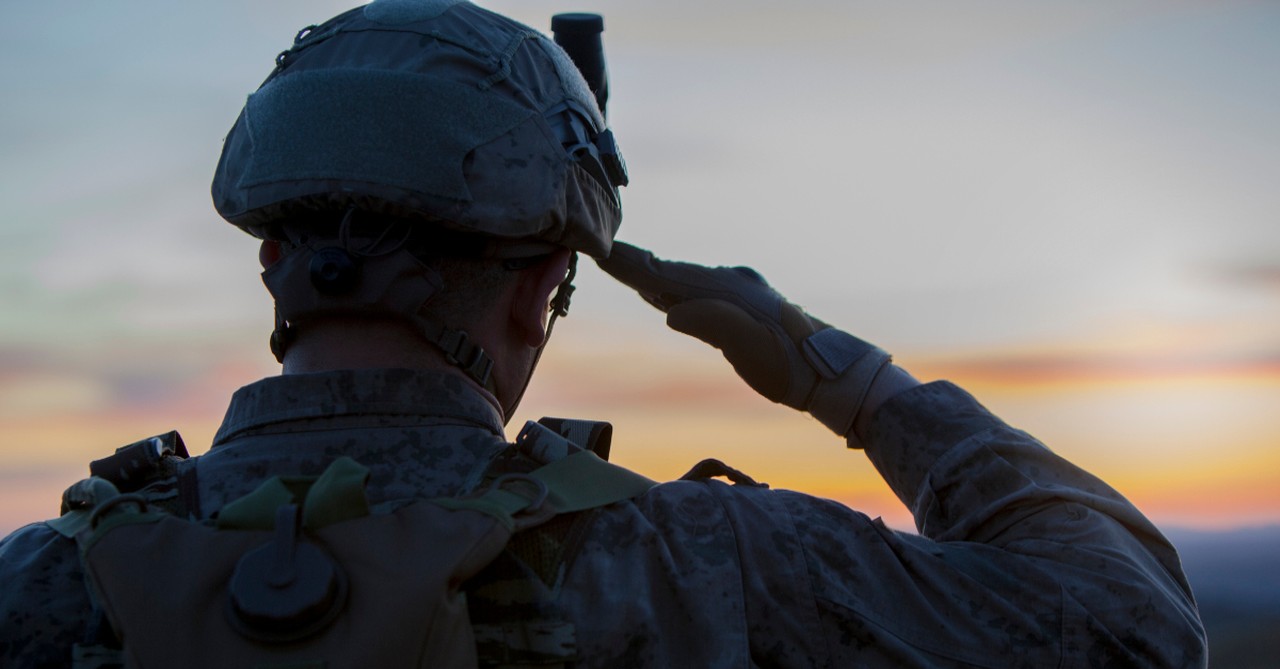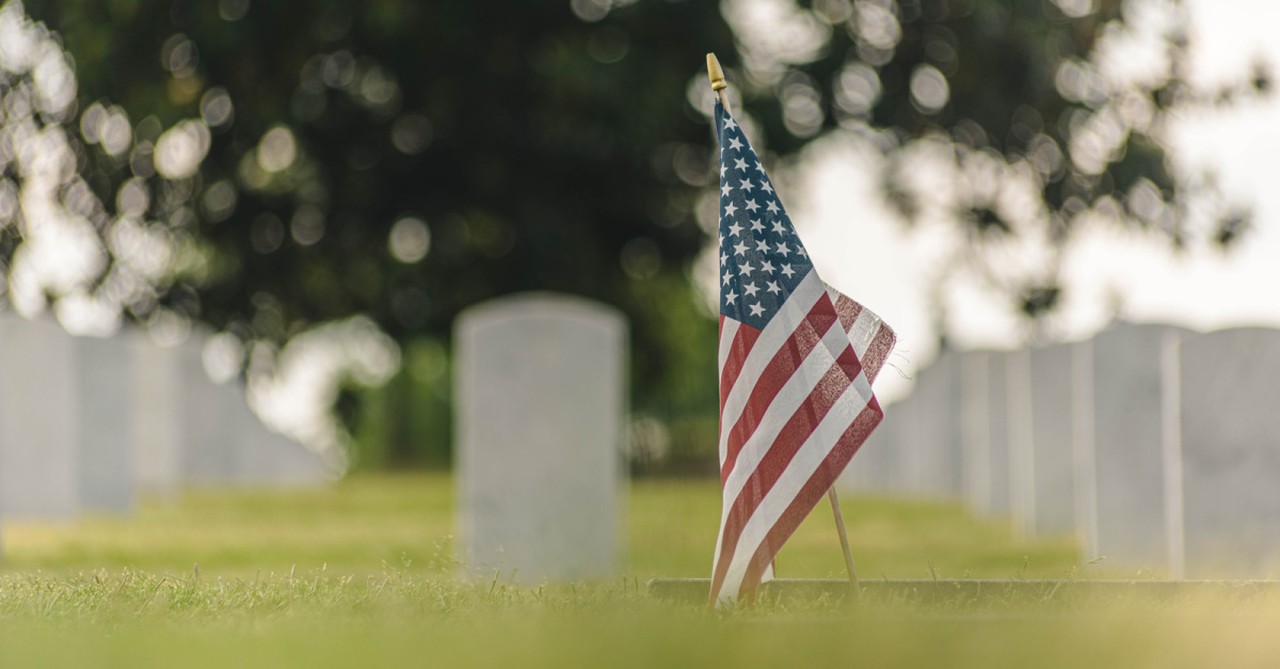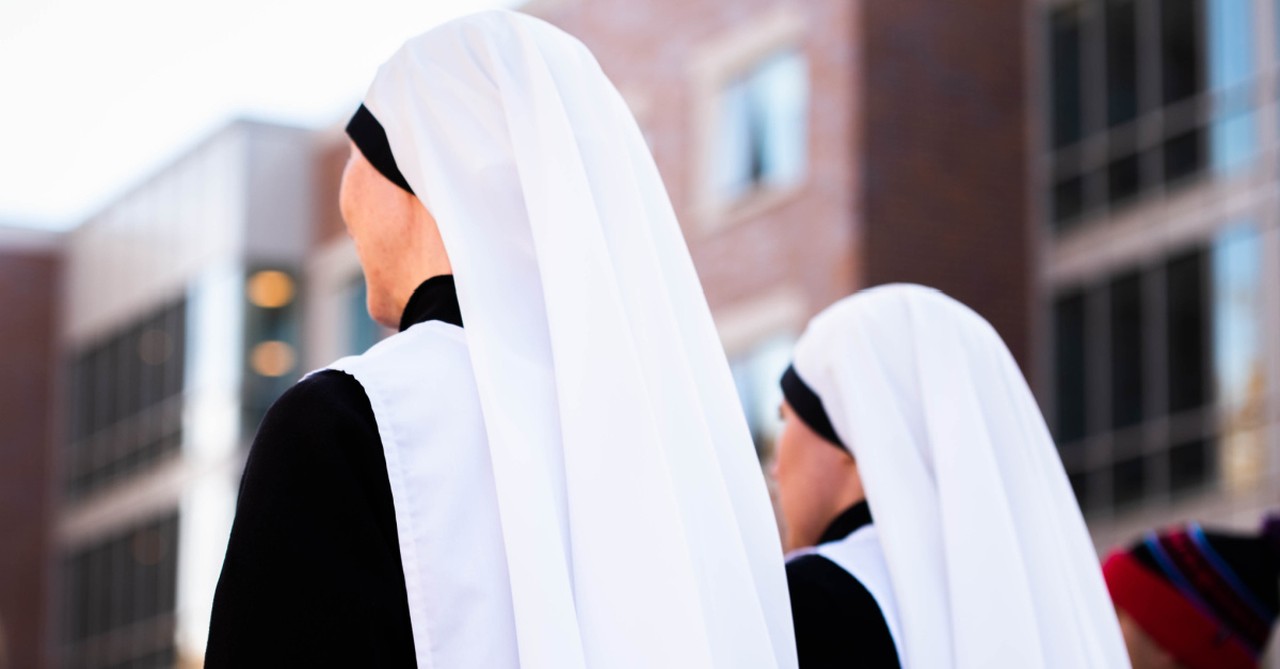
Memorial Day is a profound reminder of the sacrifices made by countless individuals for our freedoms through their service. This day is primarily about honoring those who have fallen, but also taps into deeper realms of faith and spirituality.
This day reminds believers to consider entwining faith with national identity. Christian doctrine highlights the importance of sacrifice, selflessness, and loving one’s neighbor, all attributes of those who have served and are serving in the military.
In honor of this day, here are some Christian Heroes to remember this Memorial Day.
Photo Credit: ©GettyImages/kieferpix
1. Desmond Doss: The Conscientious Objector Who Saved Lives

1. Desmond Doss: The Conscientious Objector Who Saved Lives
SLIDE 1 OF 5
Desmond Doss joined the U.S. Army in 1942, turning down a deferment despite working at the Newport News Naval shipyard when Pearl Harbor was attacked. He felt compelled to serve—willing to risk his life, but not to take one.
As a devout Christian and conscientious objector, Doss believed he could serve as a medic without carrying a weapon. Instead, he was assigned to an infantry rifle company. Refusing to carry a firearm made him a target of ridicule and resentment. Fellow soldiers saw him as a misfit; one even threatened his life in battle. Commanding officers tried everything to push him out—scolding, intimidation, assigning difficult tasks, declaring him mentally unfit, and even attempting a court-martial. But Doss stood firm, convinced he must serve both God and country—in that order.
Raised with a deep reverence for the Bible and the Ten Commandments, Doss made a personal vow as a child never to take a life after seeing a picture of Cain and Abel. In the Army, he requested Saturdays off for church, frustrating his superiors and peers, who mocked and ostracized him—until they saw his dedication to caring for others. Whether treating blisters, helping fallen comrades, or applying the Golden Rule on the battlefield, Desmond proved invaluable.
In 1945, during the battle for Okinawa, Doss’s unit attempted to capture Hacksaw Ridge, a strategic cliff fiercely defended by Japanese forces. A brutal counterattack forced a retreat—but Doss stayed behind, saving 75 wounded men under relentless fire. Days later, a grenade severely wounded him. Despite shrapnel injuries and a sniper’s bullet shattering his arm, he treated himself and urged medics to help another soldier before him.
For his bravery, Desmond Doss received the Medal of Honor, along with a Bronze Star, Purple Heart with Oak Leaf Cluster, and the Good Conduct Medal. His life and heroism are depicted in the film Hacksaw Ridge.
Photo Credit: Unsplash/Aaron Burden
2. Chaplain Emil Kapaun: Courage Under Fire and Spiritual Guidance

2. Chaplain Emil Kapaun: Courage Under Fire and Spiritual Guidance
SLIDE 2 OF 5
Born in 1916, Emil Kapaun was raised on a Kansas farm. His parents were of German-Bohemian ancestry. He had one sibling, his brother Eugene. Emil was a brilliant boy and learned how to repair farm implements. This skill would serve him well later in life when he became a prisoner of war.
In 1936, he finished his studies of classics and philosophy at Conception College. He started attending Kendrick Seminary and became a priest in 1940. Between 1943 and 1944, he was a chaplain at an Army Air Base in Herington, Kansas. He then joined the Army Chaplain Corps in 1944. He spent a brief time in Camp Wheeler, Georgia.
After that, he served the rest of World War II in the Burma and India Theater. Then in 1946, they promoted him to captain. Later that year, he left the Army and continued to advance his education.
In 1948, he joined the Army Chaplain Corps again. He became mobile to support the Korean War and served as a chaplain in Japan and Korea before being taken prisoner. During the fight, he moved quickly under enemy fire to rescue men from no-man's land outside the battle perimeter. He negotiated for a soldier's safety, physically stopped an execution, and rejected opportunities to escape, choosing to stay and care for the wounded. In August 1950, he received the Bronze Star.
In November 1950, the North Korean Army and its allies captured him, but he escaped after they were shot and killed. His captors recaptured him when he remained with the wounded at a POW camp. While in the prison camp, he tended the sick, looked for food, and built fires despite the guards' warnings. The prisoners credited him for saving their lives before he died from his wounds and maltreatment.
Besides other honors, Kapaun received the Medal of Honor, Distinguished Service Cross, and the Bronze Star Medal. The Roman Catholic Church also called him “Servant of God.” This is the second of four stages to becoming a saint.
Photo Credit: GettyImages/OzkanOngel
3. Major Dick Winters: A Leader Committed to Ethical Service

3. Major Dick Winters: A Leader Committed to Ethical Service
SLIDE 3 OF 5
Richard was born in 1918 in New Holland, Pennsylvania, and had a very normal childhood. He attended college for a Bachelor of Science in economics and enrolled in the United States Army the following summer. Richard didn’t have any interest in going to war, but he did so to live out the mandatory 12 months he signed up for. He volunteered for paratrooper training, and the Army assigned him to Easy Company of the 506th Parachute Infantry Regiment in Georgia.
In 1941, President Roosevelt signed the Service Extension Act into law, mandating 30 months of service for those drafted. Since Richard volunteered, his contract still fell under the 12-month term. When the Japanese invaded Pearl Harbor and the U.S. entered the war, everything changed.
After attending Army Cadet School, the Army assigned him to the 101st Airborne Division. His promotion to Second Lieutenant followed quickly. He volunteered for paratrooper training, and the Army assigned him to Easy Company of the 506th Parachute Infantry Regiment in Georgia.
A year later, he and his men deployed to England to prepare for the Battle of Normandy. They arrived in Normandy and his men informed him that the German artillery had shot down the headquarters of Easy Company. That night he led his men to assault the Nazis, specifically aiming at exits on Utah Beach. His superiors promoted him to captain from there.
Winters and his men parachuted into Son, Holland, where they assaulted the Nazi soldiers and then they moved on to Bastogne, Belgium, for the Battle of the Bulge. The Nazis launched a counterattack and Winters held ground until General Patton’s Third Army arrived. He received a promotion eight days after Hitler died. They tasked him and his men with capturing Hitler's alpine retreat. His men finished their journey on May 5th, with Nazi Germany surrendering two days later. Winters stayed in Europe, taking personal acceptance of the surrender of German soldiers.
From there, Winters headed to France and, just after marrying, received orders to deploy again. He refused and tried being a planning and training officer before resigning.
Photo Credit: Chad Madden/Unsplash
4. Mother Teresa: Serving Humanity in Times of War and Peace

4. Mother Teresa: Serving Humanity in Times of War and Peace
SLIDE 4 OF 5
Mother Teresa was an Albanian-Indian Catholic nun and founded the Missions of Charity. Her real name was Anjezë Gonxhe Bojaxhiu. The Missions of Charity comprised a congregation committed to helping the poor and destitute in India. Mother Teresa devoted her life to helping those in need and received the Nobel Peace Prize in 1979. The Catholic Church canonized her in September 2016.
Photo Credit: ©Gianna Bonello/Unsplash
5. Captain William "Billy" Graham: The Evangelist Who Served

5. Captain William "Billy" Graham: The Evangelist Who Served
SLIDE 5 OF 5
William “Billy” Graham is one of the most prominent evangelists of our time. He preached to people at his Crusades, simulcasts, and evangelistic rallies. He had regular prime-time broadcasts and provided spiritual counsel to 12 U.S. presidents, including Harry S. Truman and Barack Obama. He also wrote several books, received various awards and honors, and founded Samaritan’s Purse.
This holiday serves as an intersection of memory, spirituality, and community. We should pause and reflect on those who have sacrificed, Christian and non-Christian, with our faith to guide our remembrance.
Photo Credit: ©Getty Images/Keystone/Stringer

Originally published May 07, 2025.









